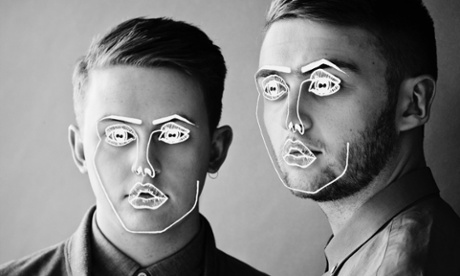After darkness falls, there are strange phantasmagorical rumblings deep in the guts of cities around the world: a disused slaughterhouse near the Danube in Belgrade, an old air-raid shelter beneath the streets of Shanghai, a vast concrete swimming pool under a football stadium in Tbilisi, an unsignposted apartment building in the cobbled back alleys of Istanbul.
Over the past three decades, electronic dance music has spread to places such as this on the way to becoming a worldwide culture, establishing a home in some of the most unlikely places, mainly because of the relentless enthusiasm of the iconoclasts, misfits, fanatics and hustlers who have embraced the music and sought to build communities around it.
Researching my book about global dance culture, I was often astonished by their commitment to the cause. There was the Iranian who was sentenced to a lashing for staging techno parties in Tehran, the lysergic adventurer trying to set up a psytrance commune in the wilds of rural China, the French sound system activist lobbying government officials to permit free raves – as well as all the others who just wanted to get loaded and have a good time.
I met another type of character, too: the executives and entrepreneurs who worked in what they described as the “dance music industry”, and spoke of branding and sponsorship deals, digital reach and media synergies. Such people have become more commonplace since electronic dance music was transformed into a colossal global market, worth an estimated annual £5.2bn in 2016, according to market research company Danceonomics.
This is the world dominated by festival brands such as Ultra and Tomorrowland, where the superstar DJs described as “electronic cash kings” by business magazine Forbes – the likes of Calvin Harris, Tiesto, Steve Aoki and David Guetta – can earn hundreds of thousands of dollars for a single show. At trade symposiums such as the EDMBiz conference that I attended at Caesars Palace in Las Vegas, the power-players and techno-capitalists gather to scheme over how to monetise the nocturnal pleasures of the world’s millennials.
Vegas is the style capital of EDM, an indigenous reinterpretation of dance music that is brash, garish, unrepentantly commodified and seemingly heedless of the music’s origins in black and gay subcultures. Watching a brawny white horde of shirtless jocks bellowing for the Chainsmokers to unleash the drop at Electric Daisy Carnival in Vegas, I wondered how much they knew of the times when this was the music of liberation for the socially excluded and oppressed.
So how has dance culture moved out of that original underground? The globalisation of this digital-age pop culture has been accelerated by the internet, which developed a symbiotic relationship with dance music as they grew up together. In the beginning, the rave scene was largely dependent on word-of-mouth contacts, flyers, fanzines and patchy deliveries of import vinyl delivered to specialist stores, which ensured that scenes developed haphazardly and organically. Now, everything is available instantly, and nothing can remain hidden for long.
Social media has helped to proselytise the culture further, although it can sometimes make clubs feels like showpiece sports tournaments with lines of fans facing the stage, holding up phones to capture Instagram moments rather than getting lost in the groove.
Another major change since the wild early years of rave is that threats to its existence come not only from disapproving officials or the police, but from the sanitising forces of gentrification. Manhattan’s once-vital nightlife scene has been eviscerated, and gentrification remains a clear and present danger to noisy nocturnal creativity in many of the world’s wealthier cities, particularly London.
Meanwhile dance music has amassed a vast back catalogue: a canon to be revered, revived or reinterpreted at will. House was always musically indebted to disco, but now, as ever more obscure old-school tracks are digitised and uploaded, history looms ever larger over the culture, manifesting itself in revivals of everything from speed garage to electro and even the hyperactive hardcore style called gabba. The past has never been so present.
Some of the most imaginative DJs on the global circuit now play conjuring tricks with electronic music’s history to construct sonic narratives that are resolutely modern. But on my travels, I found that some producers on the geographical frontiers were still trying to replicate their US and European heroes’ peak-era glories, like the lovingly sculpted homages to classic Detroit techno I heard in Shanghai.
Then there were others who, as a result of conscious experimentation, fortuitous misinterpretation or ingenuity necessitated by poverty, managed to dream up sounds that could not have originated anywhere else. Perhaps the most exciting was gqom, a mesmerisingly intense and deliriously psychotropic sound invented in the townships of Durban by young South Africans using cracked software, initially circulated as MP3s via Blackberry Messenger and popularised by minibus-taxi drivers blasting the tunes as they plied their routes.
Innovations such as gqom suggest that over 30 years since the first house and techno records emerged, dance culture retains some of its power to surprise. But amid the globalisation of techno-capitalism, it will be down to the next generation of underground visionaries, mavericks and idealists around the world to keep it moving forward.
- Rave On: Global Adventures in Electronic Dance Music by Matthew Collin is published by Serpent’s Tail.










